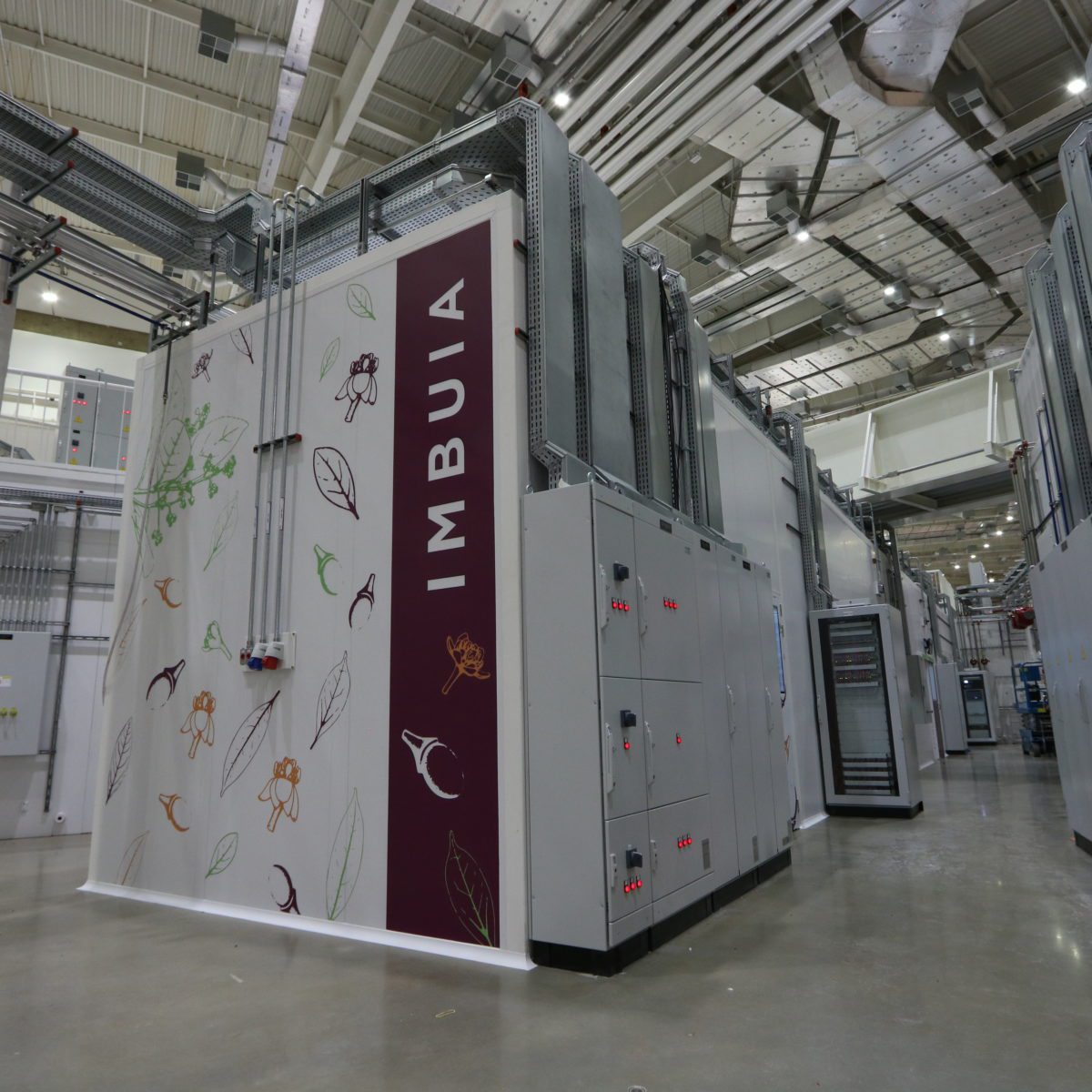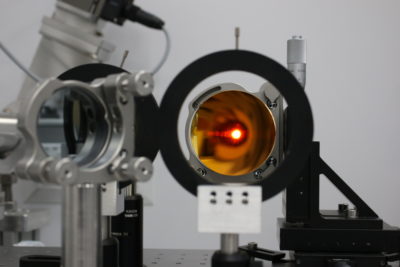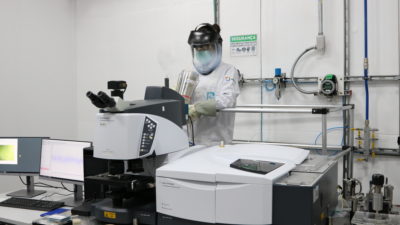
New commissioning stage of Imbuia beamline allows the use of advanced infrared spectroscopy techniques at micro and nano scales
Imbuia experimental station received its first synchrotron beam today, after being connected to the Sirius electron accelerators. It became the only research infrastructure in the world to benefit from infrared radiation generated from a fourth-generation synchrotron accelerator, on the frontier of this type of technology.
The beamline was designed to carry out experiments that allow analyzing the chemical composition of virtually any material and conducting frontier research into new materials, with special emphasis on organic materials, both biological and synthetic. Through spectroscopy techniques, it will allow exploring properties even of materials composed of few atomic layers.
“The Imbuia range is primarily intended to be an easy-to-use, multidisciplinary and highly sensitive analytical tool, benefiting from the improved stability of a fourth-generation storage ring,” explains Harry Westfahl Jr., director of the National Synchrotron Light Laboratory (LNLS).
Imbuia started to operate in November 2021, but until now it was only possible to carry out experiments that did not depend on high light intensity parameters, temporarily emitted by sources such as an infrared lamp or laser.
Raul Freitas, researcher who coordinates the Imbuia beamline, explains that connecting the instruments to a state-of-the-art synchrotron light source brings numerous advantages, the main one being to increase the range of the technique.
“The broad spectrum within the infrared frequency makes it possible to chemically distinguish and quantify structures at the nanometer and micrometer scale. With this, we will be able to study a greater variety of materials and have more molecular signatures in a single experiment”, he details.

By being connected to a fourth-generation light source, such as Sirius, it is expected that the sensitivity to these molecular identities will increase greatly, increasing the quality of the experiment, which could bring advantages, especially in challenging experiments at the nanometer scale. “A synchrotron light source with greater brightness and beam stability allows us to study systems with low concentration of molecules with great sensitivity and faster. With this, it is possible to advance this analytical technique in the studies of biological systems.
Imbuia is composed of two stations, one dedicated to low energy experiments for Micro-scale analysis and the other for Nano-scale samples. In addition, the beamline will allow access to LNLS support laboratories, offering users sophisticated instrumentation to optimize sample preparation that can benefit advanced studies in nanobiology, new energetic materials and nanopharmacology, among others.
“In the case of biological material, cell cultures need substrates suitable for infrared. Some samples need to be sliced by microchromes and ultramicrochromes that allow cuts with nanometer precision. The same is true when dealing with two-dimensional structures. Devices that use graphene, for example, may require the material to be sculpted at the nanoscale. This is only possible with an instrument called the FIB (Focused Ion Beam), which uses a beam of focused ions to grind the material to the required precision. The LNLS will make this type of infrastructure available to support proposals in Imbuia.”, explains Freitas.
Imbuia users will also benefit from a computational interface that is being improved so that the collected data can be post-processed in a more efficient way, generating a pre-analysis of results.

Scientific Potential
Some examples of research areas that have already benefited from experiments in the infrared range, in which Imbuia beamline can be usefull, are:
About Sirius
Designed and built by Brazilians and funded by the Ministry of Science, Technology and Innovation (MCTI), Sirius is one of the most advanced synchrotron light sources in the world. This great scientific equipment has at its core a state-of-the-art electron accelerator, which generates a type of light capable of revealing the microstructure of organic and inorganic materials. These analyzes are carried out at research stations, called beamlines. Sirius will support several beamlines, optimized for different experiments, and that will work independently of each other, allowing several groups of researchers to work simultaneously, in different research in the most diverse areas, such as health, energy, new materials, environment, among others.
The experimental techniques available in Sirius’ beamlines will make it possible to observe microscopic aspects of materials, such as the atoms and molecules that constitute them, their chemical states and their spatial organization, in addition to following the evolution over time of physical, chemical and biological processes that occur in fractions of a second. In a beamline it is also possible to follow how these microscopic characteristics are changed when the material is subjected to different conditions, such as high temperatures, mechanical stress, pressure, electric or magnetic fields, corrosive environments, among others. This capability is one of the main advantages of synchrotron light sources when compared to other high resolution experimental techniques.
Sirius’ beamlines are advanced scientific instruments, designed to solve problems in strategic areas for development. Initially, a set of 14 beamlines was planned to cover a wide variety of scientific programs. In total, Sirius will be able to house up to 38 beamlines.
About CNPEM
Sophisticated and effervescent environment for research and development, unique in Brazil and present in few scientific centers in the world, the Brazilian Center for Research in Energy and Materials (CNPEM) is a private non-profit organization, under the supervision of the Ministry of Science, Technology and Innovations (MCTI). The Center operates four National Laboratories and is the birthplace of the most complex project in Brazilian science – Sirius – one of the most advanced synchrotron light sources in the world. CNPEM brings together highly specialized multi-thematic teams, globally competitive laboratory infrastructures open to the scientific community, strategic lines of investigation, innovative projects in partnership with the productive sector and training of researchers and students. The Center is an environment driven by the search for solutions with impact in the areas of Health, Energy and Renewable Materials, Agro-environment, and Quantum Technologies. As of 2022, with the support of the Ministry of Education (MEC), CNPEM expanded its activities with the opening of the Ilum School of Science. The interdisciplinary higher course in Science, Technology and Innovation adopts innovative proposals with the aim of offering excellent, free, full-time training with immersion in the CNPEM research environment.
CARNAÚBA’s experimental station has detectors for simultaneous X-ray fluorescence, X-ray diffraction, X-ray excited optical luminescence and X-ray ptychography techniques, and is operating, during commissioning phase, from 6.4 keV to 14 keV
First 3D imaging experiments at Sirius were performed using ptychographic nanotomography